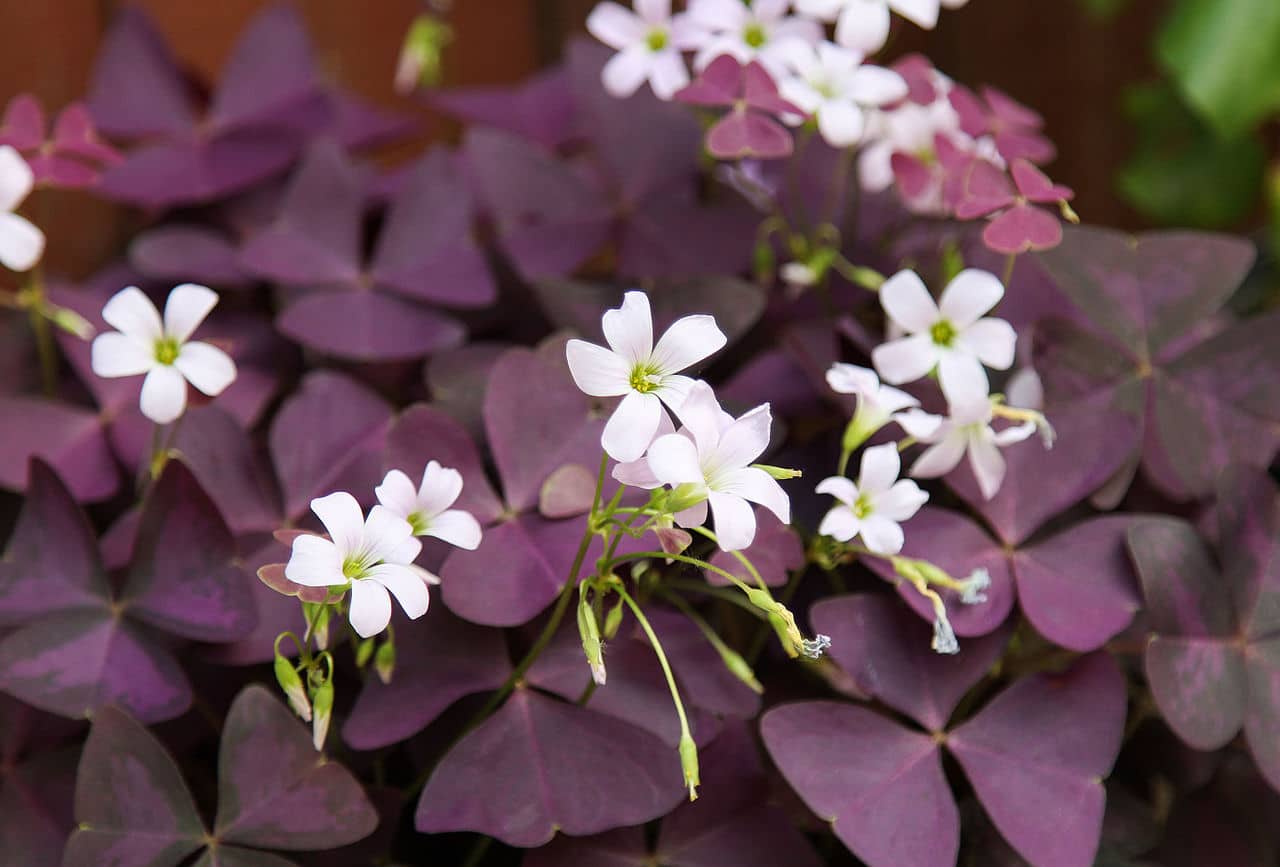
Image – Wikimedia Commons / Maja Dumat from Germany
This is a plant that, normally, we would not recommend putting in the garden. Why? Well, it is a clover, and these herbaceous plants grow very fast, invading the entire garden in a matter of no time. However, the butterfly plant or purple clover is a bit different. Unlike most Oxalis, our protagonist is really pretty.
Its purple leaves will decorate your patio in a spectacular way. Find out how to take care of your plant.
Origin and characteristics of the butterfly plant

Image – Wikimedia Commons / me
This precious clover, whose scientific name is oxalis triangularis native to South America. It has leaves divided into three triangular-shaped purple leaflets with a pink center, and its small pink flowers are composed of 5 petals. Being a clover, its growth is very fast, so it is highly recommended to plant it in a pot and not in the garden, since otherwise we would end up with a beautiful field full of purple flakes. Its size is ideal for growing it in a low round pot, as it reaches only 15-20 centimeters, and its roots do not need much substrate to grow.
It must be placed in a sunny exposure, being able to tolerate semi-shade if it has more light than shade. It is thus a plant very adaptable and very grateful that it will develop without problems in any type of soil, preferring those that have good drainage. But let’s see better in detail below.
Caring for the oxalis triangular

Image – Wikimedia Commons / Maja Dumat from Germany
Location
- Outdoor: the butterfly plant can be had in the garden or patio in full sun. The only thing is that if you are going to put it in the ground, it is preferable that you plant it with the pot since this way you can have it better controlled.
- Interior: indoors it will be fine in a room with plenty of natural light.
Watering the purple clover
So that it survives, you should water it two or three times a week in summer, and once or twice a week the rest of the yearalways avoiding waterlogging. It is important that you let the substrate dry completely after watering; Thus, its roots will be aerated and work better, absorbing the water that the leaves need so much to be able to breathe and photosynthesize.
Subscriber
We do not advise it. The butterfly plant is a clover, and as such its growth rate is very fast. To this must be added the high germination rate of its seeds, because of the ten that fall to the ground it is very likely that they will all germinate; with which, its colonizing potential is high, and if we are not careful we could end up having specimens in many corners of the garden and even in pots.
It would only be advisable to add compost or other organic fertilizer if the soil in the garden was very, very poor in nutrients. For example, in soils severely affected by erosion, or by intensive crops.
Planting or transplanting time
Can be planted in the garden in spring. If you have it in a pot, you can transfer it to a larger one when you see that the roots come out through the drainage holes, or if you see that it has already occupied the entire container.
The butterfly plant resists transplants well, but be careful not to manipulate the roots too much.
Butterfly Plant Multiplication
The oxalis triangular multiplies by seeds in springfollowing this step by step:
- First, choose a seedbed: it can be a pot -with holes-, a horticultural seedbed tray, containers of yogurt or milk previously washed and with a hole in the base,… Anything that is waterproof and measures at least 5- 10 centimeters in diameter will do.
- Then, fill the seedbed with universal substrate and water.
- Then, place a maximum of three seeds in each one, and cover them with a thin layer of substrate.
- Finally, put the seedbed outside, in semi-shade, and keep the substrate moist but not waterlogged.
Thus, they will germinate in about five days.
Plagues and diseases

Image – Flickr / Scot Nelson
It is very resistant in general. But in humid environments you have to keep an eye on the snailssince these are animals that love to eat leaves. These are kept at bay with diatomaceous earth for example. Sprinkle a little around the plant, and you will see how they do not come close.
If we talk about diseases, it is vulnerable to Puccinia oxalidiswhich we could call the clover rust. It is a fungus that causes the appearance of rounded bumps, as if they were ‘dots’ of orange color on the leaves (you can see it in the image above). It is treated with fungicide.
Pruning
Don’t need itbut you can reduce its size, that is, make it more compact, in spring with the help of previously disinfected scissors. Do it after flowering.
Rusticity
A negative point is that it does not tolerate strong frosts, but that should not worry us: can be had as a houseplant in a very bright room until temperatures rise again.
Anyway, you have to know that holds well up to -5ºCin a sheltered corner.
Where to buy purple clover?

Image – Wikimedia Commons / Maja Dumat from Germany
They sell it in nurseries, but you can also get it.
Did you know the oxalis triangular? What do you think?

